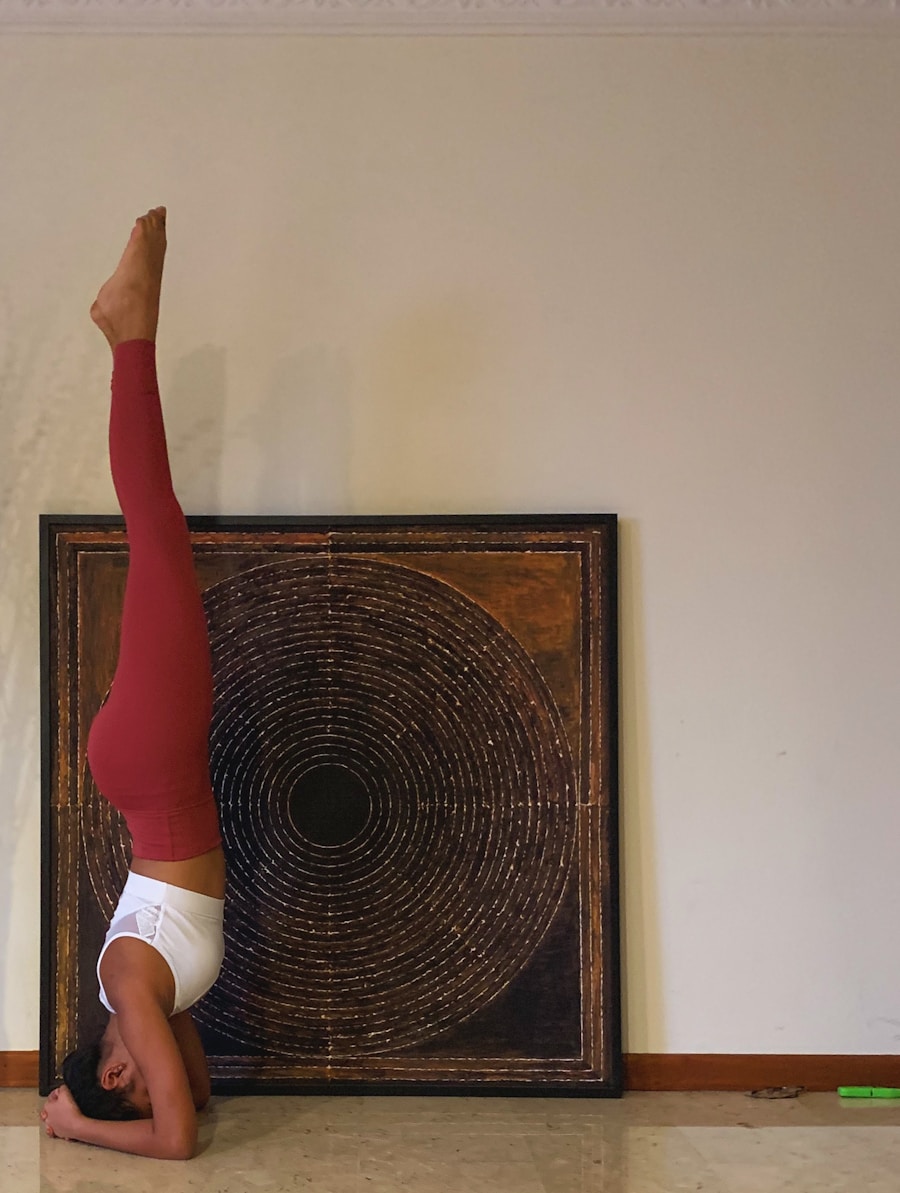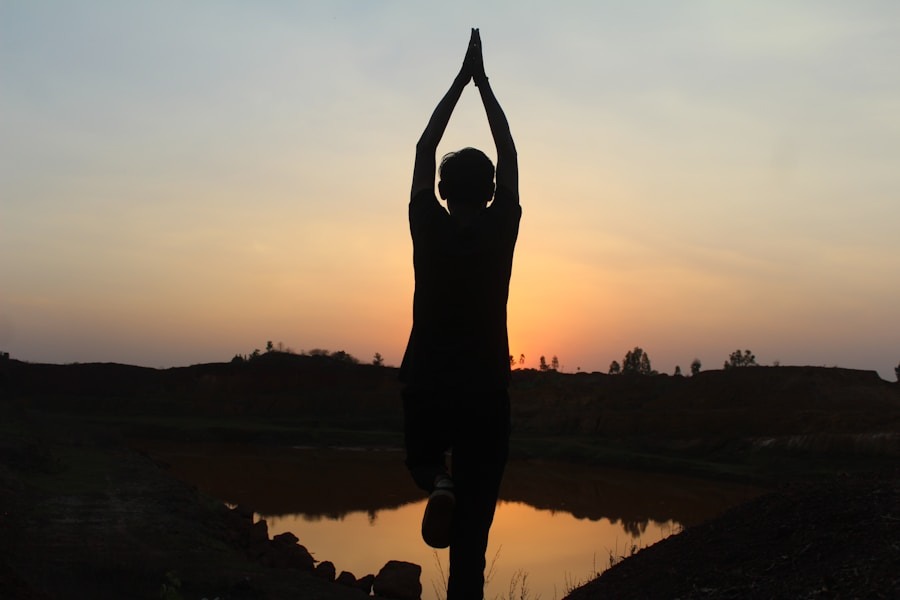Suryanamaskar, or Sun Salutation, is a dynamic sequence of twelve yoga postures that flow together in a graceful manner. This ancient practice is not merely a physical exercise; it is a holistic approach that integrates breath, movement, and mindfulness. Each posture in the sequence is designed to stretch and strengthen various muscle groups while promoting flexibility and balance.
The sequence begins with a standing position, where practitioners raise their arms overhead, and flows through a series of forward bends, lunges, and backbends, ultimately returning to the starting position. The rhythmic nature of Suryanamaskar creates a meditative experience, allowing practitioners to connect deeply with their breath and body. The origins of Suryanamaskar can be traced back to ancient Indian texts, where it was often performed as a form of worship to the sun, symbolizing vitality and energy.
Traditionally, it is practiced at dawn, aligning with the rising sun, which is believed to enhance the benefits of the practice. Each posture in the sequence corresponds to specific Sanskrit mantras that honor the sun, further deepening the spiritual aspect of the practice. As practitioners move through the sequence, they engage in a mindful exploration of their physical limits while cultivating a sense of gratitude for the life-giving energy of the sun.
Key Takeaways
- Suryanamaskar is a sequence of 12 yoga poses that are performed in a flowing sequence to create a complete body workout.
- Practicing Suryanamaskar can improve flexibility, strength, and overall physical and mental well-being.
- To master Suryanamaskar, focus on proper breathing, alignment, and gradually increasing the number of rounds.
- Padmasana, or Lotus Pose, is a seated yoga posture that promotes deep relaxation and meditation.
- Practicing Padmasana can help open up the hips, calm the mind, and improve posture.
- To master Padmasana, start with half lotus pose, use props for support, and practice regularly to gradually increase flexibility.
Benefits of Practicing Suryanamaskar
The benefits of practicing Suryanamaskar are extensive and multifaceted, impacting both physical and mental well-being.
The combination of stretching and strengthening movements enhances flexibility, improves posture, and builds core strength.
For instance, the forward bends in the sequence stretch the hamstrings and lower back, while the lunges and backbends strengthen the legs and open up the chest. This holistic engagement of the body can lead to improved athletic performance and reduced risk of injury. Beyond physical benefits, Suryanamaskar also offers significant mental health advantages.
The synchronization of breath with movement fosters a state of mindfulness that can alleviate stress and anxiety. As practitioners focus on their breath and the flow of their movements, they cultivate a sense of presence that can be transformative. Research has shown that regular practice of yoga, including sequences like Suryanamaskar, can lead to decreased levels of cortisol, the stress hormone, thereby promoting relaxation and emotional stability.
Furthermore, the meditative quality of this practice encourages self-reflection and introspection, allowing individuals to connect with their inner selves on a deeper level.
Tips for Mastering Suryanamaskar

To master Suryanamaskar, it is essential to approach the practice with patience and mindfulness. Beginners should start by familiarizing themselves with each posture individually before attempting to flow through the entire sequence. This foundational understanding allows practitioners to focus on proper alignment and technique, which are crucial for preventing injuries.
For example, when transitioning into Downward Facing Dog (Adho Mukha Svanasana), it is important to keep the spine straight and engage the core to avoid straining the lower back. Breath awareness is another critical aspect of mastering Suryanamaskar. Each movement in the sequence is typically paired with an inhalation or exhalation, creating a rhythmic flow that enhances the overall experience.
Practitioners should aim to establish a steady breath pattern that feels comfortable yet energizing. For instance, inhaling while raising the arms overhead and exhaling while folding forward helps maintain a smooth transition between postures. As one becomes more familiar with the sequence, they can begin to explore variations and modifications that suit their individual needs and abilities.
Exploring the Padmasana Pose
Padmasana, or Lotus Pose, is a seated posture that holds significant importance in yoga practice. This pose is characterized by crossing the legs in such a way that each foot rests on the opposite thigh, creating a stable base for meditation and introspection. Padmasana is often associated with deepening one’s meditation practice due to its ability to promote stillness and focus.
The pose encourages an upright spine and opens up the hips, allowing for greater energy flow throughout the body. The practice of Padmasana requires flexibility in the hips, knees, and ankles, making it essential for practitioners to approach this pose gradually. It is not uncommon for individuals to find themselves unable to achieve full Lotus Pose initially; however, this should not deter them from exploring its benefits.
Variations such as Ardha Padmasana (Half Lotus Pose) can be practiced as stepping stones toward mastering Padmasana. This adaptability allows individuals at different levels of flexibility to experience the calming effects of seated meditation without straining their bodies.
Benefits of Practicing Padmasana
Practicing Padmasana offers numerous benefits that extend beyond physical flexibility. One of the primary advantages is its ability to promote mental clarity and focus. By providing a stable seated position, Padmasana encourages practitioners to turn their attention inward, facilitating deeper states of meditation.
This inward focus can lead to enhanced concentration and improved cognitive function over time. Many meditators find that practicing Padmasana regularly helps them cultivate a sense of calmness and tranquility that permeates their daily lives. Additionally, Padmasana has physiological benefits that contribute to overall well-being.
The pose stimulates various organs in the body, including the digestive system, which can aid in digestion and alleviate discomfort associated with digestive issues. The gentle pressure applied to the abdomen during this pose encourages better circulation and can help regulate metabolic processes. Furthermore, by opening up the hips and groin area, Padmasana can relieve tension stored in these regions due to prolonged sitting or sedentary lifestyles.
Tips for Mastering Padmasana

Alignment and Comfort in Padmasana
Engaging in these preparatory poses regularly will not only enhance flexibility but also build strength in the muscles surrounding the hips. When attempting Padmasana itself, alignment is key to ensuring comfort and stability within the pose. Practitioners should sit on a cushion or folded blanket if they find it challenging to keep an upright spine while seated on the floor.
Listening to Your Body in Padmasana
This elevation can alleviate pressure on the knees and lower back while promoting proper posture. Additionally, it is essential to listen to one’s body; if discomfort arises in any part of the body during practice, it may be beneficial to modify the pose or take breaks as needed.
Reaping the Benefits of Padmasana
With patience and persistence, practitioners can gradually deepen their experience in Padmasana while reaping its myriad benefits for both body and mind.
If you are interested in exploring the philosophical aspects of Indian history and independence, you may enjoy reading India’s Struggle for Independence: Sri Aurobindo and Gandhi’s Philosophies Shaping a Nation.
FAQs
What is Suryanamaskar?
Suryanamaskar, also known as Sun Salutation, is a sequence of 12 yoga asanas (postures) performed in a flowing sequence. It is a complete body workout that helps improve flexibility, strength, and overall well-being.
What are the benefits of practicing Suryanamaskar?
Practicing Suryanamaskar regularly can help improve flexibility, strengthen muscles, improve posture, increase stamina, and promote mental relaxation. It also helps in weight management and improves overall cardiovascular health.
What is Padmasana?
Padmasana, also known as Lotus Pose, is a seated yoga posture that is commonly used for meditation and pranayama (breathing exercises). It involves crossing the legs and placing each foot on the opposite thigh.
What are the benefits of practicing Padmasana?
Practicing Padmasana helps in calming the mind, improving concentration, and promoting physical stability. It also helps in opening up the hips and stretching the knees and ankles. Additionally, it is believed to stimulate the spine, pelvis, abdomen, and bladder.






















+ There are no comments
Add yours